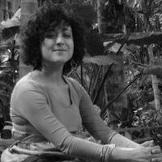Dr. Maria Gerolemou

University of Cyprus/Freie Universitaet Berlin
Maria Gerolemou currently works as an adjunct lecturer at the Classics and Philosophy Department of the University of Cyprus and at the Open University of Cyprus. Her research focuses on ancient drama, primarily through parameters, such as those of gender and madness, on paradoxography and recently on ancient mechanics. She is the author of the book “Bad Women, Mad Women: Gender und Wahnsinn in der Griechischen Tragödie” (Tübingen, 2011). She is now preparing a volume on the concept of miracle in Antiquity and works on the function of mirrors and the concept of iatromechanics in Antiquity.
Teaching Slot within the Summer School 2017:
Automation in Classical Antiquity: Early Robotic
In the fifth century BC, the visualization of the inner body in the medical treatises of the Hippocratic corpus suggests that the physical body is probably perceived as fragmented hence, as such, it allows the prospect of enhancing the human body by utilizing technology with the view of restoring it to its initial state, according to natural terms. Under this assumption, methods of hygienic, eugenics and prosthetics aim at a restitutio ad integrum of the body and not ad optimum which aspires to overcoming the vulnerability of the physical body; according to medical texts, bodily restoration beyond the dictates of nature is not feasible. Nevertheless, the exploration of an enhanced artificially fashioned body and its bodily parts, which is able to strive for progress of the human condition, is initiated by literary writers; fiction seems to invite us to abandon the unrewarding physical condition of the human body and vote for its enhancement. Artificial bodies function as a replica of the living body and challenge it in its autogenic effects, i.e. its physical matter, reflexes and limits. Hence, artificial bodies imitate bodily automatisms that comprise natural unconscious activities, such as breathing, walking etc., as well as mental habits and patterns of behavior (social automatisms), such as obeying the laws, being brave, acting according to gender norms etc. The reproduction of bodily automatisms could be compared to a literal form of reproduction undertaken by an engineer or an artist. The reproduction-procedure of social automatisms must first achieve a transformation of human natural drives into social automatisms through education; this first step will allow the further manipulation of social automatisms as well as their reproduction; the results of the whole process most of the times reveal the problematical relationship between artificiality and the natural world.
